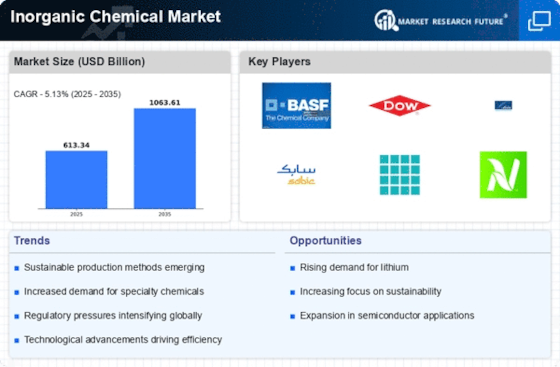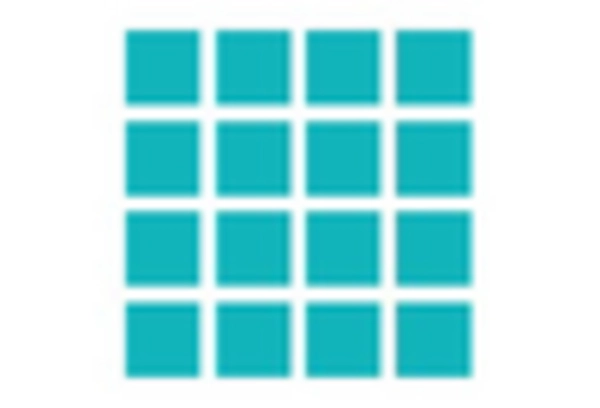Rising Demand in Agriculture
The Inorganic Chemical Market is experiencing a notable surge in demand due to the increasing need for fertilizers and pesticides. As agricultural practices evolve, the reliance on inorganic fertilizers, such as ammonium nitrate and urea, has intensified. In 2025, the market for nitrogenous fertilizers alone is projected to reach approximately 100 billion USD, driven by the necessity to enhance crop yields and ensure food security. This trend is further supported by the growing global population, which is expected to reach 9.7 billion by 2050, necessitating more efficient agricultural solutions. Consequently, the Inorganic Chemical Market is poised for growth as it caters to the agricultural sector's evolving needs.
Technological Innovations in Production
The Inorganic Chemical Market is benefiting from advancements in production technologies that enhance efficiency and reduce costs. Innovations such as automation, process optimization, and the development of new synthesis methods are transforming how inorganic chemicals are produced. For instance, the introduction of membrane technology in the production of chlorine and caustic soda has improved energy efficiency and reduced waste. These technological advancements are projected to increase production capacity and lower operational costs, making the Inorganic Chemical Market more competitive. As companies invest in research and development, the market is likely to see a rise in innovative products that meet the evolving needs of various sectors.
Environmental Regulations and Compliance
The Inorganic Chemical Market is navigating a landscape shaped by stringent environmental regulations aimed at reducing pollution and promoting sustainable practices. Governments worldwide are implementing policies that mandate the reduction of harmful emissions and the safe disposal of inorganic chemicals. This regulatory environment is prompting manufacturers to innovate and adopt cleaner production methods. As a result, the market is witnessing a shift towards eco-friendly inorganic chemicals, which are less harmful to the environment. By 2025, it is expected that compliance with these regulations will drive a significant portion of the market, as companies seek to align with sustainability goals while maintaining competitiveness in the Inorganic Chemical Market.
Growing Demand for Clean Energy Solutions
The Inorganic Chemical Market is increasingly influenced by the global shift towards clean energy solutions. As nations strive to reduce their carbon footprints, the demand for inorganic chemicals used in renewable energy technologies is on the rise. For example, lithium and cobalt, essential for battery production, are derived from inorganic sources. The market for these materials is expected to grow significantly as electric vehicle adoption accelerates and energy storage solutions become more prevalent. By 2025, the clean energy sector is projected to drive substantial growth in the Inorganic Chemical Market, as it aligns with global sustainability initiatives and the transition to a low-carbon economy.
Industrial Applications and Manufacturing
The Inorganic Chemical Market is significantly influenced by its extensive applications across various industrial sectors. Industries such as construction, automotive, and electronics rely heavily on inorganic chemicals for manufacturing processes. For instance, the production of glass, ceramics, and pigments utilizes a range of inorganic compounds, including silica and titanium dioxide. In 2025, the construction sector is anticipated to account for a substantial share of the market, driven by urbanization and infrastructure development. This increasing industrial demand underscores the pivotal role of the Inorganic Chemical Market in supporting diverse manufacturing processes and enhancing product quality.

















Leave a Comment